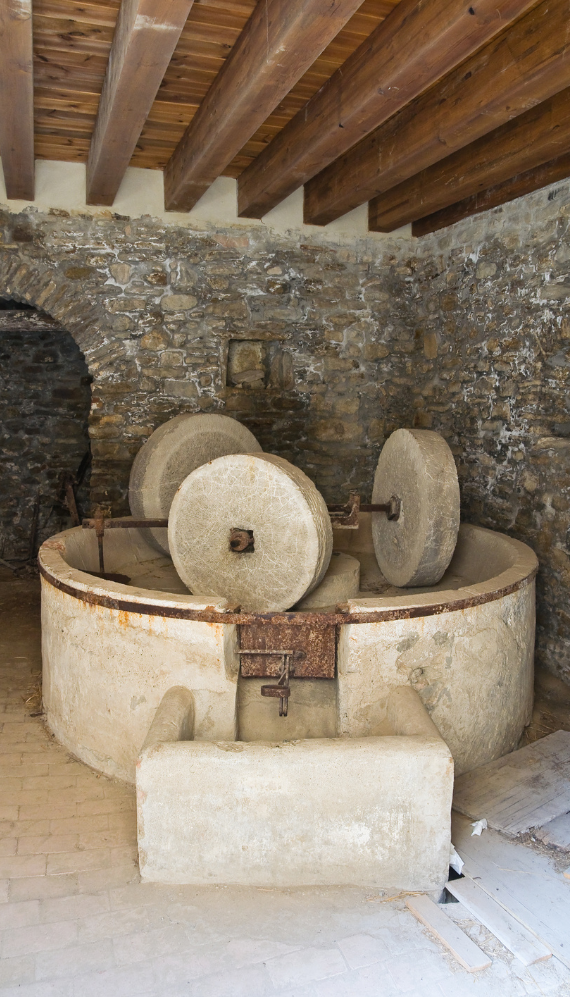
Discovering the Apulian hypogea
Itinerary description
The route will lead to the discovery of the Apulian underground sites used as workplaces for the production of oil and handicrafts.
The guided tours in the underground mills of Salento are interesting, to learn about the oil-making techniques of the past and the tools with which the transformation of the olives into the precious oil took place, such as the presses and the imposing millstones.
Among the best preserved underground oil mills, the one located in Via Cava (Taranto), the Trappitello del Duca in Giurdignano, the oil mill of Palazzo Palmieri di Martignano, the mills of Specchia, Acquarica del Capo, Vernole, Zollino, Presicce are worth a visit.
Noteworthy is the semi-underground oil mill of Muro Leccese, inside which the graffiti depicting the battle of Lepanto are of great interest. Moving to the Brindisi area, in the historic center of Mesagne, it is possible to visit a semi-underground oil mill dating back to the 16th century, discovered in the basement of Palazzo Guarini.
The last stage takes you to the beautiful Grottaglie, city of art and ceramics, where you can visit numerous artisan shops, including the underground oil mill and the “Pinca” caves, the Carriero workshop, the Vestita workshop, all entirely excavated in the rock and witnesses of the work and life of the artisans who still today, as in the past, work the clay to make dishes, jugs and containers typical of the Grottagliese tradition.
Travel duration
3-6 hours
Points of interest
Hypogeum of Cava Street
The analysis of the wall structures allows us to reconstruct at least three phases between the Middle Ages and the eighteenth century during which the tuff walls and barrel vaults were built. On the east and west fronts two lowered openings seem to be pertinent to arcosolium tombs probably dating back to the early Christian period. Other rooms dug along the rocky wall seem to have been used for production or as a shelter for animals.
Path
Gallery

